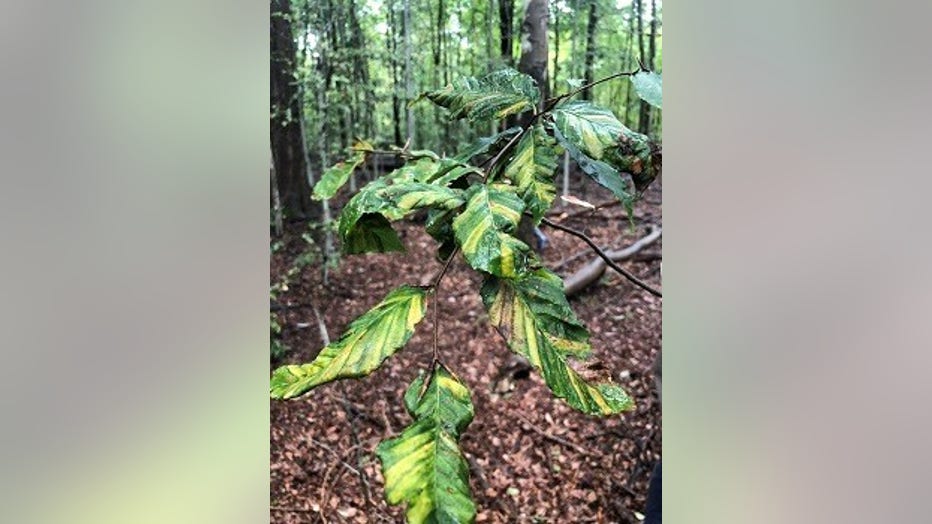Invasive worm that causes Beech leaf disease spreading to Oakland and Wayne counties

A low-temperature scanning electron microscope of a mature female nematode, Litylenchus crenatae, found in the leaves of beech trees. Photo by Electron and Confocal Microscopy Unit; colorization by Joe Mowery, ECMU. Photo via USDA Agriculture Researc
BIRMINGHAM, Mich. (FOX 2) - The invasive microscopic worm that has devastated trees in the Northeast U.S. and was reported for the first time in Michigan this year has now spread to the state's two most populated counties.
Beech leaf disease, which can cause damage to the tissue of foliage in trees has been detected in Oakland and Wayne County, a release from the Department of Natural Resources said this week. It was first reported in St. Clair County in July 2022.
According to the DNR, even though leaves are already falling off trees the disease is still detectable in trees in Michigan. They've been associated with not just damaged leaf tissue but also dead buds.
The affected trees have been reported in Birmingham, Bloomfield, China, Clay, Grosse Pointe Shores, Rochester, and Troy. While the infestations were only first discovered, the DNR believes Beech leaf disease had likely been around for at least a year, possibly longer.
"We’ve now seen beech leaf disease in both woodlots and individual urban trees in southeast Michigan," said Simeon Wright, the Michigan DNR forest health specialist. "The disease causes dark, thick bands between leaf veins, which can be seen on both green and brown leaves. If you have beech trees, take time now to look for symptoms."
The disease comes from a nematode that hides in the leaf buds of trees in the winter, causing damage to the tissue on American, European, and Asian beech tree species. Trees that are weakened by the leaf damage are known to die within six years of initial symptoms.

Thick bands of leaf tissue may turn yellow late in the growing season. Photo credit DNR.
Much remains unknown about the invasive worm, the DNR said, particularly if the organism is causing the damage itself or carrying a disease that hurts the tree.
MORE: First case of Beech leaf disease in Michigan detected in St. Clair County
"Because of this, we don’t yet know all the ways the disease might be spread," said Wright. "Currently there are no known treatments to protect trees or reduce disease impacts, although trials are ongoing."
Regardless of how it threatens trees, more than 37 million of them live in Michigan and are susceptible to the worm.
Infestations can be reported in three ways:
- DNR Forest Health Division: email DNR-FRD-Forest-Health@Michigan.gov or call 517-284-5895.
- Use the Midwest Invasive Species Information Network online reporting tool
- Download the MISIN smartphone app and report from your phone – MISIN.MSU.edu/apps/
People should take time to look for symptoms on trees on their property. Leaves that look withered or yellow or if trees have a thin canopy are all signs of Beech leaf disease.

